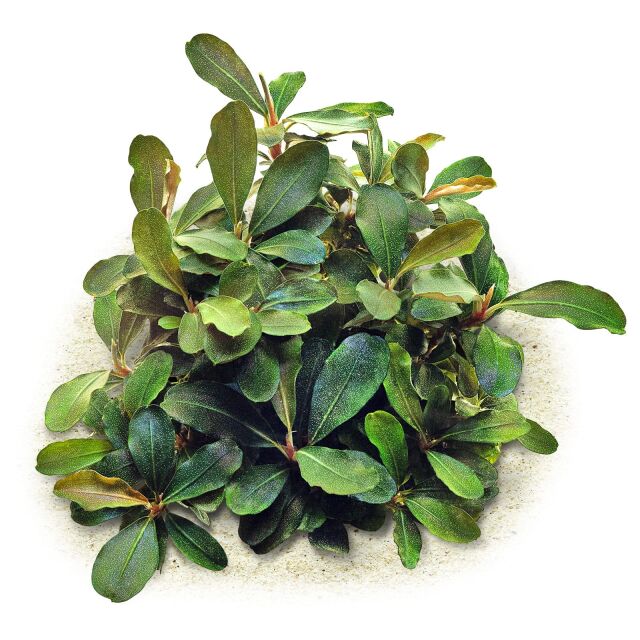
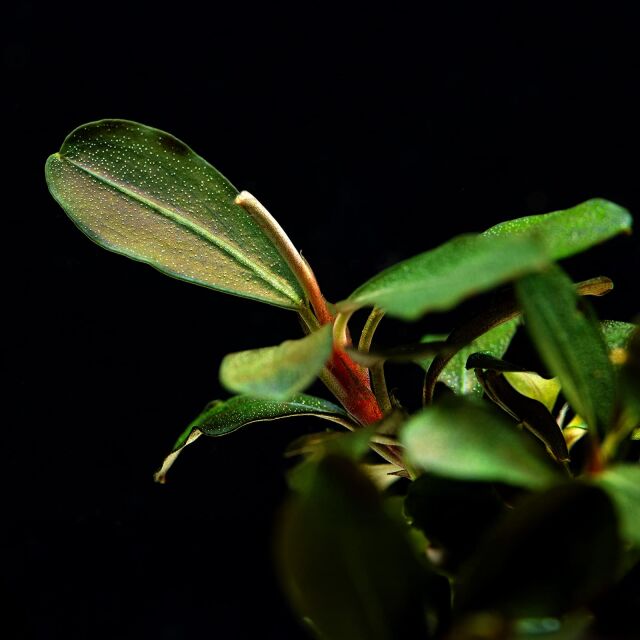
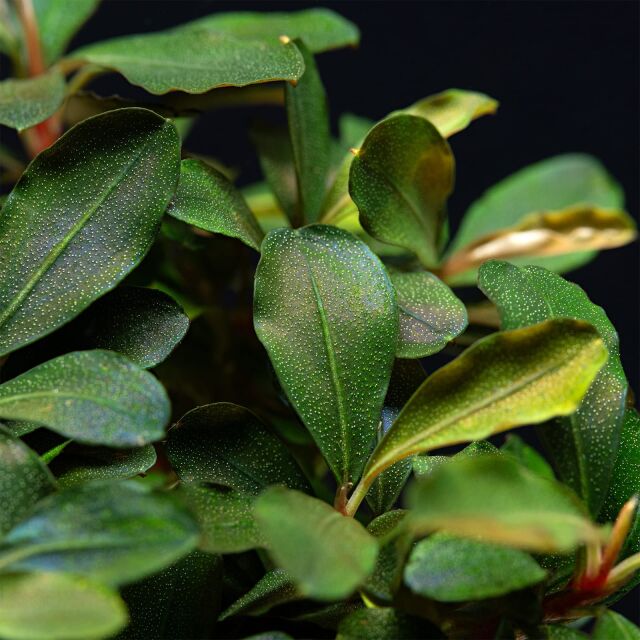
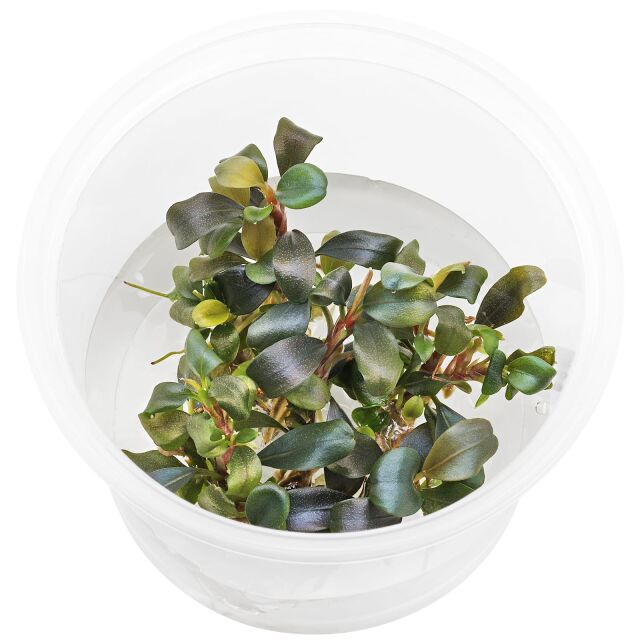
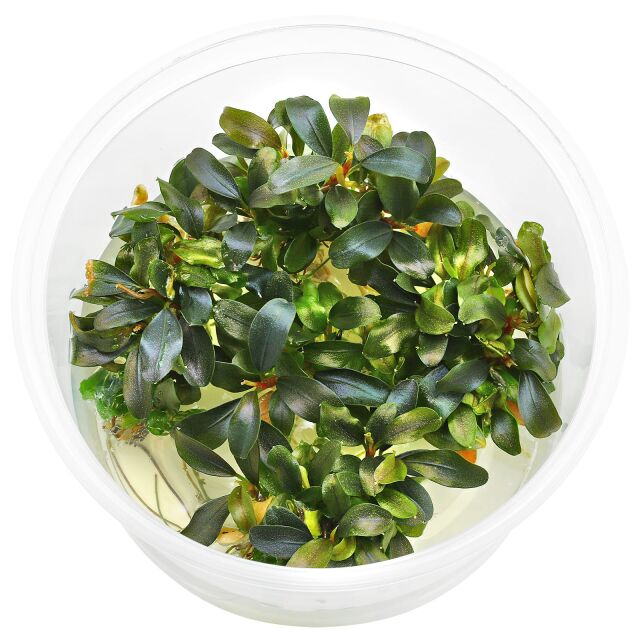

Bucephalandra sp. "Motleyana Red"
- Attractive epiphyte with compact growth habit
- Olive green leaves with blueish shine
- Reddish rhizome
Sign in or Register
Item question
We’re here for you!
Please enter your question and e-mail and we’ll contact you as soon as possible. It usually takes us up to 24 hours during business days to respond.
Thank you for your question!
Thank you, we’ll get in touch!
Close window
You already sent us a question.
Please wait a few minutes
Description
This rather small perching plant is marketed as Bucephalandra motleyana "Red", but certainly does not belong to the species B. motleyana. It is more similar to Bucephalandra pygmaea or the "Brownie" forms. That is why we are calling it B. sp. "Motleyana Red" for the time being. We do not know its exact origin, but all Bucephalandras come from the island of Borneo, where they occur as flow-adapted plants (rheophytes) on rocks in the flood zone of streams.
The trading name "Motleyana Red" does not really fit, as the plant is predominantly olive-green in colour. It grows compactly under water, branched and densely covered with leaves and forms a bush about 5 to 7 cm high and at least 13 cm wide over time. The rhizomes grow ascending and are slightly reddish in colour at the tip of the shoot. The leaves are obovate, the leaf blade is about 25 to 28 mm long, the petiole 6 mm long. The relatively soft leaves have an olive-green, somewhat glossy upper surface, sometimes with a bluish sheen, and a light grey-green underside. As with all Bucephalandras, adhesive roots develop on the rhizome.
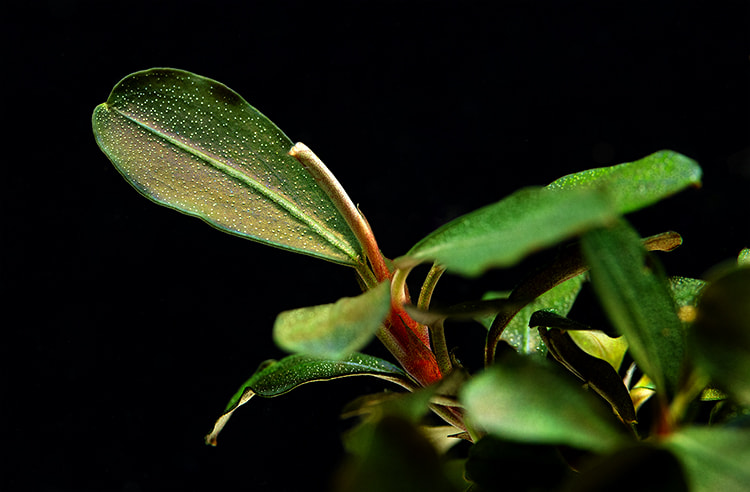
Bucephalandra species and forms are primarily epiphytes on rock or wood where they attach themselves by their roots. They can also be fixed to the bottom, however the rhizome must not be buried to avoid rotting. The plant will root on its own and benefit from the nutrients in the substrate. The growth is generally slow to very slow.
Bucephalandras cope with poor light conditions, however they develop their most beautiful look with medium lighting, good water current and constant nutrient and CO2 supply. They also tolerate strong lighting, sufficient CO2 and nutrient supply provided. The favourable temperature range is about 20 to 27°C.
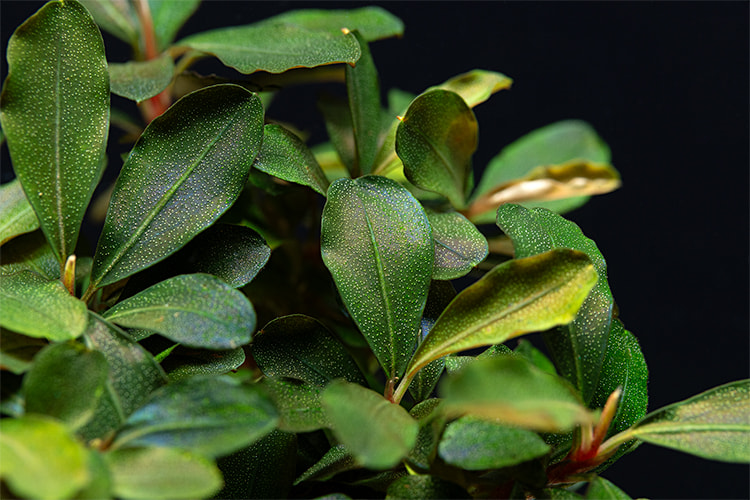
We recommend to put Bucephalandras into already cycled aquariums. It is best to leave the plants in peace so they can grow. Sudden changes of parameters may lead to shedding of leaves, normally, however, the plants regrow slowly and produce new shoots on the rhizome. Bucephalandras are easily propagated by cutting terminal and side shoots that also promotes the ramification of the plant.
How many plants do I need?
General information
Please choose a variant to see more information.
| Item no. |
|
| EAN | |
| Weight | |
| Shipping weight |
Customers ask customers
You have questions about this product? Ask other customer or our support team about this product!
Customer reviews
One review
| 5 Stars(1) |
|
| 4 Stars(0) |
|
| 3 Stars(0) |
|
| 2 Stars(0) |
|
| 1 Star(0) |
|

A beautiful variety for the different shades of green that contrast with the red colour of the stem.